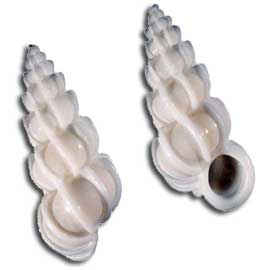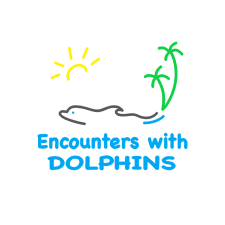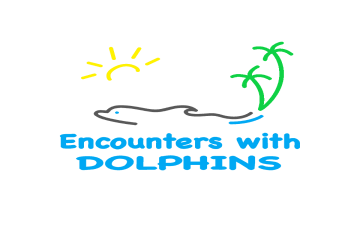Eco and Wildlife Information
Encounters With Dolphins has a strict no feeding of wildlife policy. It will interfere with their normal diet and the natural habitat where they live. Dolphins, Manatees and aquatic seabirds are the mainstay of our wonderful ecosystem estuaries which we want to show you during your cruise.
Dolphins
Bottle-nosed dolphins are large, intelligent, active aquatic mammals with sleek, gray-brown bodies, a large dorsal fin, and a distinctive, rounded snout. Family groups can be found year-round in Clearwater Harbor and surrounding inter-coastal waterway.
Manatees
The Florida manatee, or sea cow (Trichechus manatus latirostris), a subspecies of the West Indian manatee (Trichechus manatus), is a large, grayish brown aquatic mammal, with a tube-shaped body and a flat, rounded tail. Its head has a blunt snout with prominent nostrils and a few coarse whiskers. Manatees are an endangered species, protected by state and federal laws. Manatees are commonly seen in Clearwater Harbor and the Inter-coastal waterway.
Grassflats are important feeding sites for these vegetarians. Manatees seek areas with a combination of seagrass patches, quiet areas, and sites with deep “holes” for safe retreats where they can avoid boat collisions.
Bird Estuaries
The bird and other animal diversity is singularly high as Clearwater Harbor is located between more tropical regions of the Caribbean and the rest of the North American continent and is on the Atlantic Flyway. Birds generally associated with tropical regions such as herons, egrets, ibises, spoonbills, storks, cormorants, pelicans and a host of other birds are seen during our Clearwater Harbor and Compass Island Tour.
Shell Collecting
The Island beaches around Clearwater harbor are perfect for shelling and beach combing. The best times to look for shells are after a high tide, after a storm, in the morning, and during the winter months. The following shells are commonly found on Florida’s beaches. The Junonia is seldom found, and is considered a special find by beachcombers.
Conch Shells
Fighting conchs are the type of conch most commonly found on beaches. While alive, the seashell is a bright orange, but will fade under the bright tropical sunshine. Conch harvesting is now illegal in the state.
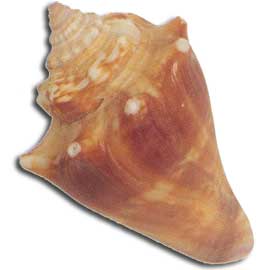
Junonia Shells
This shell is greatly prized for its beauty and apparent rarity by collectors. Its milky chamber is covered with brown spots on the outside, and the animal that occupies the shell is likewise marked. You might just get lucky.
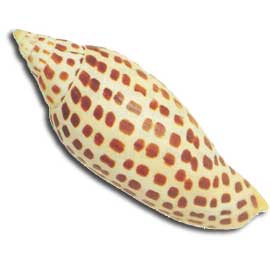
Lightning Whelk Shells
Large and distinctive, Lightning whelks grow up to 16 inches long. Lightning whelks were used by early island natives for boh food and tools, most commonly as lamps. This species has a left-handed or sinistral shell.
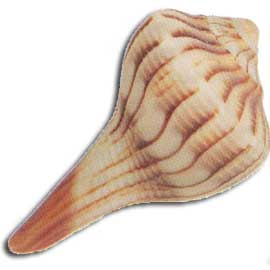
Cockle Shell
The heart cockle is one the most common shells found, though a rarity in other parts of the world. The cockle mollusk is a footed creature that can jump several inches in a single leap.
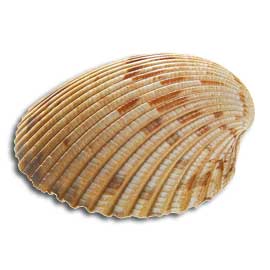
Tulip Banded Shell
Banded tulips frequently wash up on island shores to the delight of collectors and beach combers who revel in their intriguing patterns and delicately swirling form.
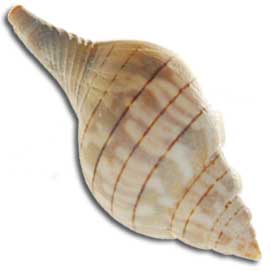
Sand Dollar Shells
While alive, the sand dollar is thin, flat and brown. Exposed to the sun, Sand dollars will bleach to a beautifully white textured pattern. They are extremely fragile.
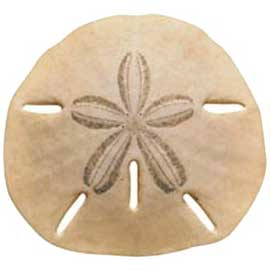
Olive Shells
Named for its elongated oval shape, the olive comes in a variety of colors and variations, and often sports a glossy finish. Olive shells rarely grow beyond three inches long.
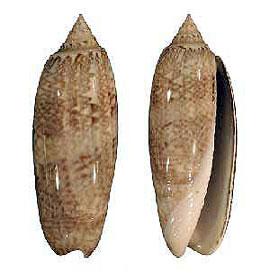
Murek Shells
The Murex can have various shapes with a long “tail” and spikes all the way down. They are hard to find in good condition because they are fragile and the surf usually destroys the spikes.
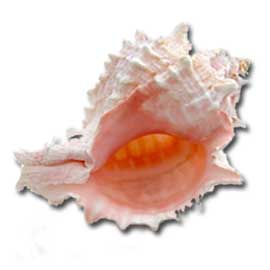
Coquinas Shells
Coquinas, not much bigger than a dime, come in many colorful patterns, stripes, solids, even plaids. You will most likely see live coquina’s digging their way into the sand as the waves recede.
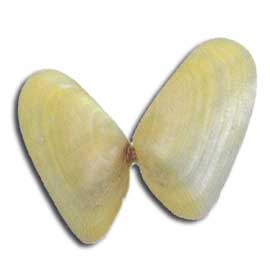
Ceriths Shells
The Ceriths, also known as horned shells, are commonly found on the beach and vary in size and ornament. Common varieties: Varicose, Grass, Dark, Stocky, Fly Speck, and West Indian False.
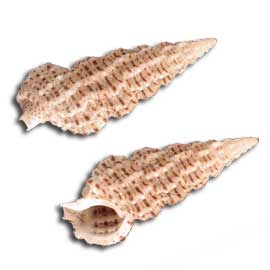
Worm Snail Shells
Worm snail looks like spaghetti stuck to a rock. Sometimes billions of worm tubes can build an actual reef. A large reef like that forms a barrier to a group of small islands called the Ten Thousand Islands.
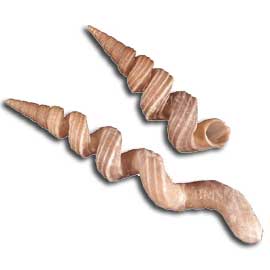
Spotted Slipper Shells
Spotted slipper shells are often called “boat” shells. When upside down, it looks like an old sailing ship with a flat deck. After 2 years of floating loose, they will attach themselves to a rock or empty shell.
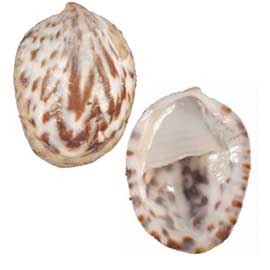
Calico Scallop Shells
Brightly colored, fan-shaped shells of some scallops, with a radiating fluted pattern, are valued by shell collectors. Up to 2 inches in length, patterns on this clam are diverse and beautiful.

Florida Spiny Jewelbox
About 1-1/2 inches in length, the Florida Spiny Jewel Box is found along the coast of Florida. It is white; the interior may show tinges of pink or red. The shell itself is thick and heavy for its size.
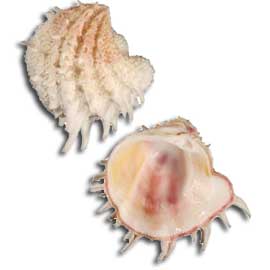
Jingle Shells
Jingle Shells are wrinkled, polished looking and come in a variety of translucent colors, with white and off-white being common as well. They make a jingling sound when shaken.

Limpets
Limpets there are 35 different species and sub species of Limpets in North America. Keyhole Limpets have an opening in the top of the shell. Limpets shells are conical or cap shaped without spiral whorls.
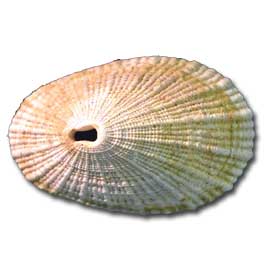
Turkey Wing Shells
Turkey wings are easy to identify. Because the shells vaguely look like outstretched bird wings they’re called Turkey Wings. Shell is a little over two inches long, oblong, with one side more or less straight.

Wentletraps
Wentletraps, staircase shells, or ladder shells, are notable for their intricately shell structure. Most species of wentletrap are white, and have a porcelain-like appearance. These shells are prized by collectors.
